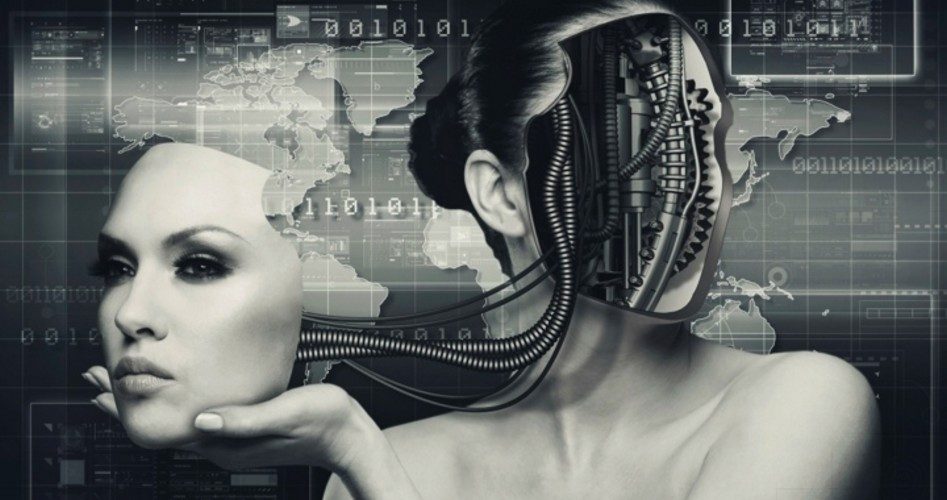
“Robot-human marriage is not about robot rights; it is about the right of a human to choose to marry a robot.” Upon reading the preceding line, one could wonder, “Is this not satire? Has a careless click of the mouse landed me at the Onion?” But the quotation is actually from Slate and was written by one Gary Marchant — a Lincoln professor of emerging technologies, law, and ethics at Arizona State University.
During the marriage battles of the last decade, the institution’s defenders warned again and again of the slippery slope, of how rubber-stamping faux marriage (“gay marriage”) would lead to the acceptance of polygamy, inter-species marriage, and beyond. And faux marriage apologists said again and again that this was nonsense. But as I pointed out repeatedly over the years, the latter have not redefined marriage, as they’ve been accused of doing. They have “undefined” it; they have, unwittingly or not, removed all boundaries. And something without a definition is nothing — thus does an undefinition exclude nothing.
Apparently not even making The Stepford Wives a reality. And Professor Marchant makes no bones about his position, unabashedly stating in his subtitle, “Humans should be able to marry robots.” He then in his piece’s body addresses the matter of where the slippery slope will lead:
Robot-human marriages might be next on the list. Probably not soon, admittedly, but it nevertheless will be an inevitable part of our future.…There has recently been a burst of cogent accounts of human-robot sex and love in popular culture: Her and Ex Machina, the AMC drama series Humans, and the novel Love in the Age of Mechanical Reproduction. These fictional accounts of human-robot romantic relationships follow David Levy’s compelling, even if reluctant, argument for the inevitability of human-robot love and sex in his 2007 work Love and Sex With Robots. If you don’t think human-robot sex and love will be a growing reality of the future, read Levy’s book, and you will be convinced.
Or just look at the marketplace. Sex “dolls” have become more and more realistic in appearance and touch, and one company recently announced that it was developing a sexbot with artificial intelligence that can talk back and express emotions.… The first to explore and benefit from robot-human sexual relationships may be individuals with physical or psychological impairments that limit their ability to have sex with other people.
… But with sex and love will come calls for the right to marry. Indeed, there are already examples of people (OK, men) who want or claim to be married to their robot.
It’s easy to see where this could lead. One could imagine a special-interest group of hapless handicapped people screaming that they’re being denied their one chance at “love” by an intolerant society beset by “haters.” And they’d be able to cite pseudo-intellectual justifications long propounded by enlightened thinkers, such as that fellow Marchant, who wrote way back in 2015, “The first principle [governing these matters] is individual autonomy, the right of each of us to decide our own private choices and intimate relationships.” As to this, one could suspect that the professor has penned his piece precisely because he hopes to be viewed some decades hence as a groundbreaker, a man ahead of his time.
Yet it’s no ad hominem attack to say there is something profoundly childish about stating “Humans should be able to marry robots.” One certainly could imagine the remark passing the lips of a filled-with-fancy five-year-old. Why, in kindergarten or first grade (I forget exactly) we children went through a phase in which, modeling adults and playing pretend, we’d say things such as “I married Lisa.” Of course, our understanding of marriage was rudimentary and childlike, but not as childish as adults (chronologically, anyway) who won’t even seriously ask the basic question here:
What is marriage?
After all, how can you determine there is a right to a thing without first determining what that thing is?
If marriage is not the union of a man and woman, is it the union of any two adults? Any two people? Any two sentient beings (for when we discover the little green men)? Any two things? What is it?
Marchant seems to believe it’s about “sex and love,” although he doesn’t define what kind of sex or what constitutes true love (perhaps that’s above the modern ethicist’s pay grade). But it wasn’t that long ago that the counter-culture commissars would scoff as they cohabited and say, “I don’t need a piece of paper to validate my love!” Why is it their ideological inheritors now think they do?
The reality is that, to paraphrase former presidential candidate and ambassador Alan Keyes, marriage is not about self-fulfillment or rights; these are selfish motivations. Marriage is about providing a vehicle through which spouses will be encouraged to fulfill their responsibilities to their children and to each other. And, of course, this applies to couples who can in principle (not necessarily in the particular) have children — namely, opposite-sex couples.
Some will mention that government benefits accrue to the married. First, however, this standard was designed to encourage a specific institution that benefitted society, not merely any “relationship” one could conjure up. This is why many have suggested that if a relationship beyond marriage is to enjoy such benefits (a bad idea), it should qualify on the basis of being a “domestic partnership.” Of course, once “marriage” has been undefined and can involve any kind of supposedly amorous relationship, it has essentially been reduced to a synonym for “domestic partnership.” It has then effectively been destroyed.
Having said this, how could a human-robot “relationship” qualify as a legitimate domestic partnership? This is where it gets interesting. At issue here isn’t Robbie the Robot with cologne or lipstick, a matter of cold steel meeting warm flesh. As Daniel H. Wilson wrote at Slate in 2012:
Those aren’t the siren love robots of the future. Realistic skin, the ability to make eye contact, faux breathing (to avoid that “walking human corpse” feel), convincing conversational skills, dexterous manipulation of objects, and the ability to not walk through sliding glass doors — we can assume that these things will be attainable within the next few decades. Consider the PR2 “personal” robot from Willow Garage; with an open-source brain located in a Google cloud, this machine can already navigate a home environment to fetch beers, load a dishwasher, and precisely fold laundry.
And consider the appeal in a hedonistic society. Imagine an android not only so realistic that it would be hard to distinguish from the real thing, but that could be tailored to its owner’s desires. Thus would a man’s sexbot not only have the appearance of his dreams, but could be programmed to fulfill his deepest fantasies. The Stepford Wives again comes to mind, or the Star Trek episode I, Mudd, in which a man creates “female” androids who, in contrast to his wife, fit his conception of the perfect woman. And if this comes to pass, you can just imagine people echoing the scientist in the ‘80s film D.A.R.Y.L. and saying, “A machine becomes human when you can’t tell the difference anymore.”
And that really gets at the issue. Just as society is confused about what marriage is, there is confusion on the question, “What is a human?” Note that if atheism is correct and we have no souls, we are then just some pounds of chemicals and water — mere (organic) robots ourselves. So in this world view, recourse to a sexbot (or marriage-bot?) would simply amount to trading one robot for another. And what a trade: You dispense with a cosmic-accident automaton and its unplanned hardware and software — and all the flaws, selfishness, and emotional instability that entails — and embrace one certainly of intelligent design, crafted to cater to your every whim. And if there was a problem (and if it were anything like Microsoft Windows there certainly would be!), forget years of expensive psychoanalysis with its questionable results. One trip to the shop and your “significant other” would be “right in the head.”
And that’s what can result when society is not right in the head. Not surprisingly, another Slate article, advertised for a time on the same page as Marchant’s piece, asks “Is an Animal a who or a what?” But the more basic questions are ignored: “Is man a who or a what?” “What is a what and what is a who?” And most important of all, “Is there such thing as a who?”
If atheism is correct and we’re mere robots, then it wouldn’t be difficult to imagine a “right” to marry another robot — if, that is, you could credibly imagine that rights exist in the first place. Rights, after all, have never been the domain of things.


